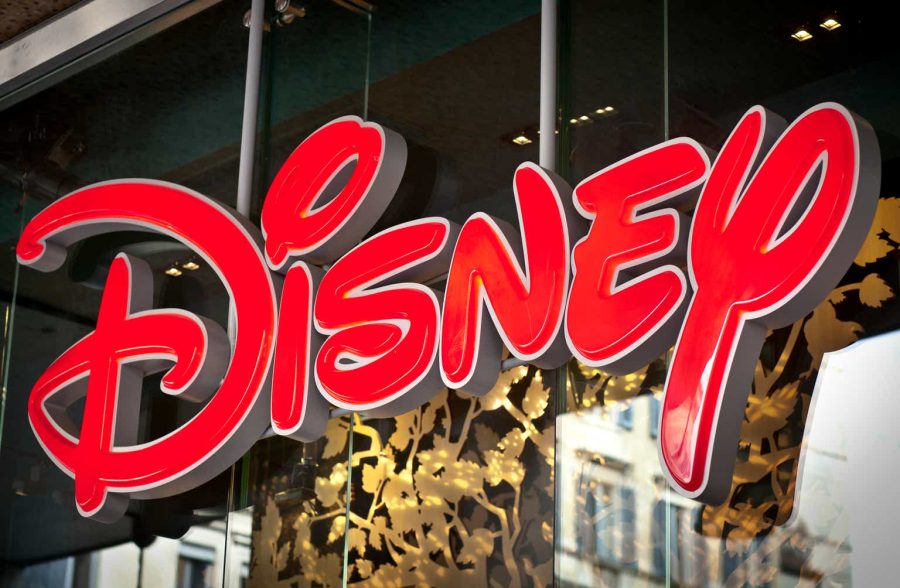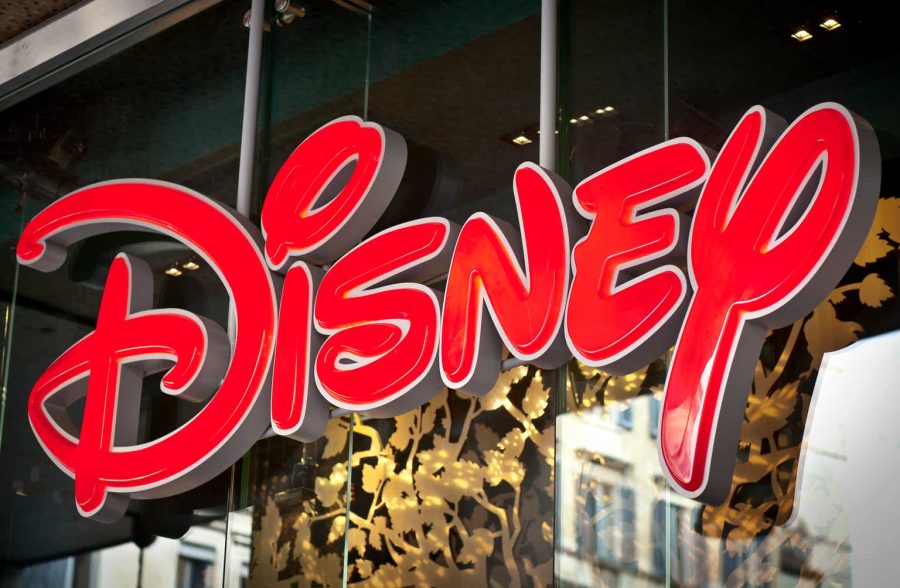July 14, 2024 This Week Top S&P 500 Gainers & Losers
Tesla Q2: The Bottom Is Likely In
Tesla: Time To Take Profits
Microsoft: The Q4 Results Should Surprise You
Tesla: Optimus And FSD Probably Won’t Save The Day
April 23, 2024 Maximizing Profits: When is the Right Time to Sell Your Business?
April 12, 2024 Improve Your Financial Status: A How-To Guide
April 12, 2024 How ZIM Integrated Container Tracking is Revolutionizing Global Trade
March 15, 2024 6 Best Growth Stocks To Buy Now According to Metatrader 5

Walt Disney (DIS) Stock Forecast for 2024–2028. Sell or Buy?
Updated: July 27, 2024 (03:50)
Sector: Communication servicesThe share price of Walt Disney Company (DIS) now
50/200 Day Moving Average: $99.84 / $100.15
This figure corresponds to the Average Price over the previous 50/200 days. For Walt Disney stocks, the 50-day moving average is the resistance level today.
For Walt Disney stocks, the 200-day moving average is the resistance level today.
Are you interested in Walt Disney Company stocks and want to buy them, or are they already in your portfolio? If yes, then on this page you will find useful information about the dynamics of the Walt Disney stock price in 2024, 2025, 2026, 2027, 2028. How much will one Walt Disney share be worth in 2024 - 2028?
When should I take profit in Walt Disney stock? When should I record a loss on Walt Disney stock? What are analysts' forecasts for Walt Disney stock? What is the future of Walt Disney stock? We forecast Walt Disney stock performance using neural networks based on historical data on Walt Disney stocks. Also, when forecasting, technical analysis tools are used, world geopolitical and news factors are taken into account.
Walt Disney stock prediction results are shown below and presented in the form of graphs, tables and text information, divided into time intervals. (Next month, 2024, 2025, 2026, 2027 and 2028) The final quotes of the instrument at the close of the previous trading day are a signal to adjust the forecasts for Walt Disney shares. This happens once a day.
Historical and forecast chart of Walt Disney stock
The chart below shows the historical price of Walt Disney stock and a prediction chart for the next month. For convenience, prices are divided by color. Forecast prices include: Optimistic Forecast, Pessimistic Forecast, and Weighted Average Best Forecast. Detailed values for the Walt Disney stock price can be found in the table below.
Long-term forecasts by years.

Disney Stock Forecast: Profit Strategies and Post-Pandemic Recovery Drive Growth

Disney (DIS) stock forecast suggests a promising near-term rise, driven by several key factors. One significant event influencing DIS stock rates is Disney's shift towards profit-focused management strategies. These include ad-supported streaming tiers and subscription fee hikes designed to bolster short-term financial performance and improve investor sentiment. Additionally, Disney aims to achieve profitability for its streaming services by the end of 2024, marking a considerable turnaround from the $11 billion in losses incurred since 2019.
Impact of Valuation and Recovery on DIS Stock
The current valuation metrics reveal Disney is potentially undervalued, with a P/E ratio of 25 implying substantial room for stock price appreciation. Analysts project a rise to $120 within 12 months and $170 by 2029, contingent on positive EPS growth. The post-pandemic recovery of Disney's parks and cruise lines, paired with a significant $60 billion investment over the next decade, underscores a robust revenue stream that is crucial for stock growth.
On the other hand, Disney faces long-term challenges from innovative competition and creative stagnation. Without new content and a strategy to counter tech giants like Apple and Amazon, Disney risks falling behind. Analysts should closely monitor these factors, adjusting their forecasts based on Disney's ability to adapt and innovate in a competitive landscape.
- Disney stock forecast hinges on profitability strategies and post-pandemic recovery.
- EPS growth and a P/E ratio of 25 suggest potential undervaluation and stock price increase.
- Analysts must consider competition challenges and Disney's innovation capacity.
For those considering whether to buy or sell Disney stock, these dynamics offer a well-rounded perspective, underscoring both opportunities and risks.
Review the original Analysis

Forecasting Disney's DIS Stock: Key Factors and Predictions

Disney (DIS) stock has been under considerable scrutiny by investors, especially with recent developments and performance metrics. Forecasting the company's stock rate hinges on several critical factors that analysts are closely monitoring to make accurate predictions.
Key Influencers of DIS Stock Rates
One of the most pivotal factors is the profitability of Disney's streaming business, which includes Disney+ and Hulu. The considerable reduction in operating losses from $659 million to $18 million signals a positive trend, with expectations of reaching profitability by fiscal year-end. Exceeding these targets could significantly enhance investor confidence, potentially leading to a re-rating of the DIS stock price.
In addition, Disney's recent extension of its media rights package with the WNBA through ESPN showcases a strategic move to leverage the rising popularity of women's basketball and star player Caitlin Clark. The $200 million annual deal may boost ESPN’s revenues and viewership, subsequently reflecting positively on DIS stock as advertising revenues climb.
- Streaming business profitability is a primary driver.
- WNBA media rights and growing interest in women’s sports.
- Performance of Disney's Parks and Experiences segment.
- Effective management of Disney's $46.3 billion debt.
- Overall stock market and economic conditions.
The Parks and Experiences segment remains Disney's cornerstone, accounting for 59% of the company's operating income. Its consistent performance provides a stable revenue base. Given Disney's substantial debt, effective debt management is crucial in maintaining financial stability, especially in a rising interest rate environment.
Analysts can use these factors to forecast changes in Disney’s stock price accurately. By closely monitoring the progression towards streaming profitability, the success of ESPN’s new venture, and the resilience of their Parks and Experiences segment, a comprehensive picture emerges. This enables precise predictions for the DIS stock price target and informs decisions on whether to buy or sell Disney stock.
Understanding how macroeconomic conditions affect discretionary spending helps analysts contextualize internal performance against broader trends. This multifaceted approach ensures the most accurate DIS stock price predictions and strategies to mitigate risks.
Review the original Analysis

Deciphering the Enigma: Predicting the Curve of DIS Stock Movements

Forecasting the trajectory of Disney (DIS) stock rates amidst a buzzing marketplace is akin to capturing the essence of a moving target, with several crucial factors at the forefront. Analysts and investors alike are keenly observing Disney's increasing reliance on its direct-to-consumer (DTC) segments, such as Disney+, and its Parks division. Considering economic downturns, this strategic pivot is precarious and highly sensitive to consumer spending trends, marking it as a vital touchstone for DIS stock forecast considerations.
Peering Through the Economic Lens
Further complicating the narrative, Disney’s lackluster battle against giants like Netflix in subscriber growth and revenue projections underscores a pivotal concern. This lagging performance, juxtaposed with an overvalued share price and a marked slowdown in business dynamism, wraps a shroud of skepticism around the DIS stock price prediction. Analysts are dissecting these elements, understanding that Disney's maneuver of leveraging cost-cutting measures to buoy declining revenues provides only a temporary veil over deeper systemic issues.
However, in this labyrinth of variables, the brightest beacon for analysts intent on mastering DIS stock price target predictions lies within economic conditions and consumer spending trends, especially their impact on Disney's theme parks. These elements function as a litmus test for Disneyland's resilience, dictating the DIS stock buy or sell debate. For those invested in the Disney stock forecast, weaving these intricate factors into a coherent analysis remains paramount, offering insights into whether to buy or sell Disney stock.
In conclusion, dissecting these intertwined factors provides the clearest lens through which to view the shifting sands of DIS stocks. As the economic conditions evolve and consumer trends shift, so too will the fate of Disney's ambitious ventures, painting a vivid picture for the future of its stock rates.
Review the original Analysis
Disney Stock Forecast: Navigating the Winds of Change
Forecasting the performance of Disney (DIS) stocks with precision involves considering a multifaceted array of factors. The company’s remarkable first-quarter results in 2024, with a notable bottom line beat, have propelled the stock upward by +21.3%, signaling a robust rebound from its January 2024 low. Such a performance ignites queries about the DIS stock forecast and whether current trends suggest a dis stock buy or sell decision.
Evaluating the dis stock price prediction involves delving into Disney’s latest earnings, which showcase revenues of $23.54B and an adjusted EPS of $1.22, representing significant QoQ and YoY growth. Further buoying investor confidence, Disney has increased dividends and announced a $3B share repurchase program for FY2024, indicative of strong financial health and future optimism. These factors play a pivotal role in shaping the dis stock price target and understanding why dis stock down periods are often followed by swift recoveries.
Factors Influencing DIS Stock Rates
Several events and elements will crucially dictate the direction of DIS stocks in the near term. Improved gross margins and free cash flow, two crucial indicators that investors watch, are the result of the company’s commitment to maintaining cost efficiencies and aggressive cost-cutting efforts. Furthermore, Disney’s strategic partnerships, like the deal with Epic Games to integrate brands into Fortnite, exemplify innovative approaches to brand expansion and audience engagement, potentially affecting the Disney stock forecast positively.
Additionally, external events such as the reported success of Paramount’s Super Bowl streaming numbers could impact Disney’s ESPN and sports joint venture, highlighting the competitive landscape in which Disney operates. These factors, combined with the management’s guidance for stellar FY2024 EPS and free cash flow increases, suggest that investors contemplating whether to buy or sell Disney stock should watch these developments closely.
In conclusion, while predicting DIS stock rates with absolute accuracy remains challenging, monitoring Disney’s strategic decisions, financial performance, and market trends will provide the insights necessary for informed investment decisions.
Walt Disney stands as a towering force in American media, reigning supreme in the entertainment industry. This dynamic corporation isn’t just putting on a show; it’s a master of diversification, with its fingers in a variety of pies. From television networks to film studios, and from magical theme parks to welcoming hotels, Disney keeps growing and evolving.
Walt Disney daily forecast for a month
| Date | Target | Pes. | Opt. | Vol., % |
|---|---|---|---|---|
| Jul 29 | 91.28 | 89.89 | 92.93 | 3.38 |
| Jul 30 | 92.02 | 90.81 | 93.96 | 3.47 |
| Jul 31 | 90.95 | 89.23 | 91.68 | 2.75 |
| Aug 01 | 88.33 | 87.61 | 90.42 | 3.21 |
| Aug 02 | 90.74 | 89.87 | 92.13 | 2.51 |
| Aug 03 | 90.98 | 89.46 | 92.54 | 3.45 |
| Aug 04 | 89.62 | 87.47 | 90.53 | 3.50 |
| Aug 05 | 88.62 | 86.87 | 89.69 | 3.24 |
| Aug 06 | 87.14 | 85.54 | 88.60 | 3.58 |
| Aug 07 | 86.72 | 85.65 | 87.91 | 2.64 |
| Aug 08 | 86.85 | 85.99 | 87.92 | 2.24 |
| Aug 09 | 86.25 | 84.70 | 87.85 | 3.73 |
| Aug 10 | 87.80 | 86.69 | 89.35 | 3.07 |
| Aug 11 | 89.83 | 88.48 | 91.90 | 3.87 |
| Aug 12 | 88.80 | 87.26 | 90.22 | 3.39 |
| Aug 13 | 89.68 | 88.55 | 91.65 | 3.49 |
| Aug 14 | 89.39 | 87.62 | 90.76 | 3.58 |
| Aug 15 | 90.57 | 88.58 | 91.33 | 3.10 |
| Aug 16 | 89.51 | 88.65 | 91.47 | 3.18 |
| Aug 17 | 89.32 | 87.69 | 89.96 | 2.60 |
| Aug 18 | 88.65 | 87.40 | 89.98 | 2.95 |
| Aug 19 | 86.87 | 85.41 | 88.43 | 3.54 |
| Aug 20 | 89.27 | 87.31 | 90.47 | 3.62 |
| Aug 21 | 89.53 | 88.08 | 91.47 | 3.84 |
| Aug 22 | 90.47 | 89.12 | 92.40 | 3.69 |
| Aug 23 | 90.42 | 89.12 | 90.96 | 2.07 |
| Aug 24 | 88.87 | 87.78 | 90.90 | 3.55 |
| Aug 25 | 89.38 | 88.15 | 90.18 | 2.31 |
| Aug 26 | 89.46 | 88.68 | 90.40 | 1.94 |
| Aug 27 | 89.46 | 87.37 | 91.31 | 4.52 |
Walt Disney Daily Price Targets
Walt Disney Stock Forecast 07-29-2024.
Forecast target price for 07-29-2024: $91.28.
Positive dynamics for Walt Disney shares will prevail with possible volatility of 3.271%.
Pessimistic target level: 89.89
Optimistic target level: 92.93
Walt Disney Stock Forecast 07-30-2024.
Forecast target price for 07-30-2024: $92.02.
Positive dynamics for Walt Disney shares will prevail with possible volatility of 3.350%.
Pessimistic target level: 90.81
Optimistic target level: 93.96
Walt Disney Stock Forecast 07-31-2024.
Forecast target price for 07-31-2024: $90.95.
Negative dynamics for Walt Disney shares will prevail with possible volatility of 2.678%.
Pessimistic target level: 89.23
Optimistic target level: 91.68
Walt Disney Stock Forecast 08-01-2024.
Forecast target price for 08-01-2024: $88.33.
Negative dynamics for Walt Disney shares will prevail with possible volatility of 3.106%.
Pessimistic target level: 87.61
Optimistic target level: 90.42
Walt Disney Stock Forecast 08-02-2024.
Forecast target price for 08-02-2024: $90.74.
Positive dynamics for Walt Disney shares will prevail with possible volatility of 2.452%.
Pessimistic target level: 89.87
Optimistic target level: 92.13
Walt Disney Stock Forecast 08-03-2024.
Forecast target price for 08-03-2024: $90.98.
Positive dynamics for Walt Disney shares will prevail with possible volatility of 3.333%.
Pessimistic target level: 89.46
Optimistic target level: 92.54
DIS (DIS) Monthly Stock Prediction for 2024
| Month | Target | Pes. | Opt. | Vol., % |
|---|---|---|---|---|
| Aug. | 87.32 | 81.12 | 93.43 | 13.18 |
| Sep. | 87.06 | 84.54 | 92.11 | 8.22 |
| Oct. | 84.80 | 79.96 | 87.09 | 8.18 |
| Nov. | 76.32 | 73.11 | 80.06 | 8.68 |
| Dec. | 78.84 | 75.37 | 82.15 | 8.25 |
Walt Disney forecast for this year
Walt Disney Stock Prediction for Aug 2024
An downtrend is forecast for this month with an optimal target price of $87.322. Pessimistic: $81.12. Optimistic: $93.43
Walt Disney Stock Prediction for Sep 2024
An downtrend is forecast for this month with an optimal target price of $87.0601. Pessimistic: $84.54. Optimistic: $92.11
Walt Disney Stock Prediction for Oct 2024
An downtrend is forecast for this month with an optimal target price of $84.7965. Pessimistic: $79.96. Optimistic: $87.09
Walt Disney Stock Prediction for Nov 2024
An downtrend is forecast for this month with an optimal target price of $76.3168. Pessimistic: $73.11. Optimistic: $80.06
Walt Disney Stock Prediction for Dec 2024
An uptrend is forecast for this month with an optimal target price of $78.8353. Pessimistic: $75.37. Optimistic: $82.15
Walt Disney (DIS) Monthly Stock Prediction for 2025
| Month | Target | Pes. | Opt. | Vol., % |
|---|---|---|---|---|
| Jan | 78.99 | 76.54 | 83.34 | 8.15 |
| Feb | 76.31 | 74.09 | 81.34 | 8.91 |
| Mar | 76.23 | 72.04 | 82.18 | 12.34 |
| Apr | 76.92 | 71.30 | 81.22 | 12.22 |
| May | 79.30 | 76.45 | 85.41 | 10.49 |
| Jun | 71.69 | 66.10 | 75.20 | 12.11 |
| Jul | 65.02 | 61.64 | 66.71 | 7.60 |
| Aug | 69.25 | 67.10 | 71.46 | 6.10 |
| Sep | 76.03 | 73.98 | 80.14 | 7.69 |
| Oct | 81.58 | 78.48 | 84.68 | 7.32 |
| Nov | 82.81 | 76.76 | 87.11 | 11.88 |
| Dec | 86.78 | 79.93 | 91.90 | 13.03 |
Walt Disney (DIS) Monthly Stock Prediction for 2026
| Month | Target | Pes. | Opt. | Vol., % |
|---|---|---|---|---|
| Jan | 84.61 | 82.33 | 88.51 | 6.98 |
| Feb | 86.73 | 84.99 | 90.72 | 6.31 |
| Mar | 80.92 | 78.01 | 84.88 | 8.10 |
| Apr | 78.65 | 73.62 | 80.78 | 8.86 |
| May | 75.43 | 71.51 | 80.78 | 11.48 |
| Jun | 70.75 | 65.52 | 74.43 | 11.98 |
| Jul | 72.24 | 66.60 | 73.97 | 9.96 |
| Aug | 75.05 | 70.40 | 80.61 | 12.66 |
| Sep | 81.51 | 77.76 | 86.64 | 10.25 |
| Oct | 86.97 | 81.40 | 92.28 | 11.78 |
| Nov | 84.27 | 80.48 | 86.13 | 6.56 |
| Dec | 85.71 | 80.65 | 88.19 | 8.55 |
Walt Disney (DIS) Monthly Stock Prediction for 2027
| Month | Target | Pes. | Opt. | Vol., % |
|---|---|---|---|---|
| Jan | 79.19 | 75.95 | 81.33 | 6.62 |
| Feb | 80.78 | 77.71 | 84.01 | 7.50 |
| Mar | 87.97 | 85.15 | 90.52 | 5.93 |
| Apr | 95.44 | 88.09 | 102.41 | 13.98 |
| May | 98.12 | 91.35 | 105.77 | 13.64 |
| Jun | 104.20 | 96.80 | 108.99 | 11.19 |
| Jul | 105.24 | 97.77 | 113.45 | 13.82 |
| Aug | 103.77 | 97.54 | 109.68 | 11.07 |
| Sep | 113.63 | 106.69 | 117.60 | 9.28 |
| Oct | 123.40 | 117.35 | 128.33 | 8.56 |
| Nov | 124.51 | 115.67 | 130.48 | 11.36 |
| Dec | 123.26 | 117.22 | 131.15 | 10.62 |
Walt Disney (DIS) Monthly Stock Prediction for 2028
| Month | Target | Pes. | Opt. | Vol., % |
|---|---|---|---|---|
| Jan | 121.04 | 116.44 | 123.95 | 6.05 |
| Feb | 124.68 | 120.69 | 130.29 | 7.37 |
| Mar | 130.29 | 121.82 | 139.67 | 12.78 |
| Apr | 127.81 | 124.87 | 135.48 | 7.83 |
| May | 135.61 | 126.52 | 145.37 | 12.97 |
| Jun | 134.11 | 130.90 | 140.28 | 6.69 |
| Jul | 142.03 | 137.06 | 151.97 | 9.81 |
| Aug | 139.05 | 129.73 | 146.69 | 11.56 |
| Sep | 149.47 | 140.51 | 152.61 | 7.93 |
| Oct | 157.69 | 147.13 | 167.31 | 12.06 |
| Nov | 151.54 | 139.88 | 156.24 | 10.48 |
| Dec | 157.76 | 149.24 | 167.54 | 10.92 |
Walt Disney information and performance
500 SOUTH BUENA VISTA STREET, BURBANK, CA, US
Market capitalization of the Walt Disney Company is the total market value of all issued shares of a company. It is calculated by the formula multiplying the number of DIS shares in the company outstanding by the market price of one share.
EBITDA of Walt Disney is earnings before interest, income tax and depreciation of assets.
P/E ratio (price to earnings) - shows the ratio between the price of a share and the company's profit
Price/earnings to growth
Dividend Per Share is a financial indicator equal to the ratio of the company's net profit available for distribution to the annual average of ordinary shares.
Dividend yield is a ratio that shows how much a company pays in dividends each year at the stock price.
EPS shows how much of the net profit is accounted for by the common share.
Trailing P/E depends on what has already been done. It uses the current share price and divides it by the total earnings per share for the last 12 months.
Forward P/E uses projections of future earnings instead of final numbers.
Enterprise Value (EV) /Revenue
The EV / EBITDA ratio shows the ratio of the cost (EV) to its profit before tax, interest and amortization (EBITDA).
Number of issued ordinary shares
Number of freely tradable shares
Shares Short Prior Month - the number of shares in short positions in the last month.
Walt Disney (DIS) stock dividend
Walt Disney last paid dividends on 07/08/2024. The next scheduled payment will be on 07/25/2024. The amount of dividends is $0.75 per share. If the date of the next dividend payment has not been updated, it means that the issuer has not yet announced the exact payment. As soon as information becomes available, we will immediately update the data. Bookmark our portal to stay updated.
Last Split Date: 01/01/1970
Splitting of shares is an increase in the number of securities of the issuing company circulating on the market due to a decrease in their value at constant capitalization.
For example, a 5: 1 ratio means that the value of one share will decrease 5 times, the total amount will increase 5 times. It is important to understand that this procedure does not change the capitalization of the company, as well as the total value of assets held in private hands.
















































